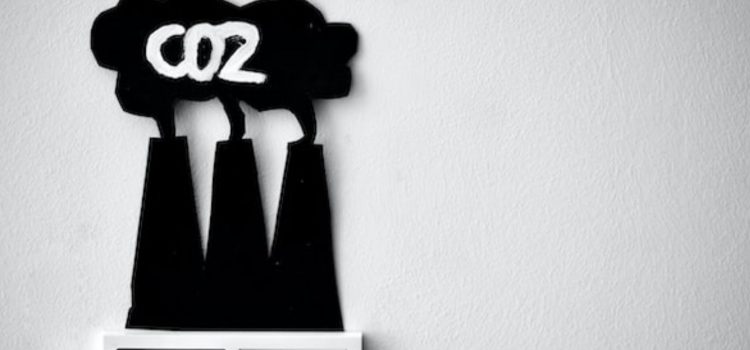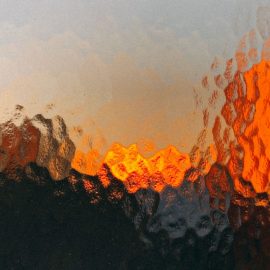

This article is an excerpt from the Shortform book guide to "Unsettled" by Steven E. Koonin. Shortform has the world's best summaries and analyses of books you should be reading.
Like this article? Sign up for a free trial here.
Do humans cause climate change? If so, to what extent? What’s the evidence?
Steven E. Koonin argues that the human impact on the climate is relatively small. He shows this with his analysis of greenhouse gases and aerosols released into the atmosphere.
Continue reading to learn about Koonin’s findings and conclusions about manmade climate change.
Do Humans Cause Climate Change?
Do humans cause climate change? While Koonin agrees with the mainstream view about the extent of recent global warming, he disagrees when it comes to the cause of this recent warming. In particular, he contends that the scientific evidence doesn’t conclusively establish the extent of manmade climate change, though best estimates suggest it’s relatively small.
(Shortform note: Though Koonin claims he’s going against the grain of mainstream climate science with this contention, one critic suggests that he’s committing a strawman fallacy in not clarifying that climate scientists themselves agree that certain aspects of climate science—including the exact extent of human influence—are unsettled.)
To defend this assertion, Koonin points out that the Earth has historically experienced significant changes in average surface temperature anomalies. For example, the last million years have featured cycles of quick warming followed by gradual cooling. So, the causes must have been natural because the cycles occurred long before humans began impacting the climate.
Consequently, Koonin infers that we can’t rule out the possibility that recent warming is also partially due to natural causes. At the very least, he argues we must carefully consider the evidence to see whether—or to what extent—we’ve contributed to rising temperatures.
Koonin suggests that, when we do so, we’ll find that our impact on the climate is relatively small. To show as much, he analyzes this impact in two ways: 1) the extent to which we’ve caused the climate to warm by increasing greenhouse gases in the atmosphere and 2) the extent to which we’ve caused it to cool by inserting reflective aerosols into the atmosphere.
| The Milankovitch Cycles: The Primary Driver of Historical Climate Change Cycles Some experts maintain that historical cycles of climate change were primarily driven by the Milankovitch cycles—long-term variations in the Earth’s orbit that affect where solar radiation is distributed on Earth’s surface. These orbital variations include the direction of the Earth’s rotation, the shape of the Earth’s orbit, and the angle of the Earth’s axis relative to its orbit. According to scientists, the changes in solar radiation themselves don’t directly cause climate change, however. Rather, these changes cause other shifts that in turn affect the climate—for example, melting ice, which makes the earth less reflective, and warming the ocean so that it releases more CO2. So, the Milankovitch cycles indirectly caused cyclical climate change. Nonetheless, experts caution that the Milankovitch cycles can’t explain recent warming, since the Industrial Revolution, because its effects stretch over longer timespans—tens of thousands of years, rather than hundreds. Thus, although the Milankovitch cycles show that natural causes can lead to long-term climate change, they’re not a valid explanation of recent climate change. |
Impact #1: How Greenhouse Gases Cause Global Warming
First, Koonin acknowledges that we’re responsible for increasing greenhouse gases in the Earth’s atmosphere, which warm the climate. He clarifies that greenhouse gases—like CO2, methane, water vapor, and ozone—work by intercepting heat in the atmosphere, causing it to return to the earth and increase surface temperature. So, because we burn fossil fuels for energy that release CO2 into the atmosphere, we contribute to CO2 in the atmosphere.
(Shortform note: CO2 is the dominant greenhouse gas emitted in the US, constituting over 80% of nationwide greenhouse gas emissions. Methane, the second most-emitted greenhouse gas, is responsible for about 11% of US greenhouse gas emissions.)
This higher concentration of CO2 in turn traps more heat at the Earth’s surface. Koonin cites data that the CO2 concentration increased from 280 parts per million (ppm) in 1750, to 410 ppm in 2019. Consequently, this increased concentration in CO2 has increased the percent of heat intercepted from 82.1% to 82.7%. Moreover, Koonin cites projections that, if the CO2 concentration were to reach 560 ppm, the percent of heat intercepted would increase to 83.2%, over 1% higher than in 1750. The United Nations Intergovernmental Panel on Climate Change (IPCC) estimates that this would raise Earth’s average surface temperature by about 3°C (5.5°F).
Impact #2: How Aerosols Offset Global Warming
At the same time, Koonin points out that other human practices actually result in the climate becoming cooler, which helps offset the warming from greenhouse gases. In particular, burning coal often creates aerosols—minuscule particles in the atmosphere—that are reflective, and thus have a cooling effect on the globe by reflecting sunlight back into the atmosphere, away from the Earth’s surface. Moreover, Koonin argues that human practices like deforestation make the globe more reflective, leading to lower temperatures.
(Shortform note: While aerosols are released into the atmosphere when we burn fossil fuels like coal, they’re also released when we burn biomass—such as wood and certain plants. Moreover, aerosols can be released through natural processes; marine plankton, for example, secretes molecules that are eventually emitted as aerosols.)
According to Koonin, these cooling factors offset about half of the warming influence from our carbon emissions. However, he also argues that, although climate scientists understand the warming impact of CO2 to a precise degree, they’re much less certain about the exact cooling impact of aerosols. For this reason, our best estimates hold that, of the 239 watts per square meter (W/m2) of energy (which radiates heat) flowing throughout the earth’s surface, humans are currently responsible for somewhere between 1.1 and 3.3 W/m2. In other words, because aerosols offset much of the warming effect of CO2, humans are only responsible for about 1% of the energy in the climate system.
(Shortform note: Estimates of the energy in the climate system that humans are responsible for differ slightly. For instance, other studies report that humans are responsible for about 2.6 W/m2 of energy, slightly higher than Koonin’s estimate. Nonetheless, Koonin’s estimate of between 1.1 and 3.3 W/m2 falls well within the scientific consensus.)

———End of Preview———
Like what you just read? Read the rest of the world's best book summary and analysis of Steven E. Koonin's "Unsettled" at Shortform.
Here's what you'll find in our full Unsettled summary:
- That humans are only partially to blame for the warming climate
- Why the proposed solutions to climate change are unlikely to succeed
- Alternative responses to climate change and how to improve understanding






